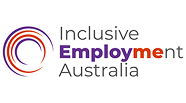
Businesses have been slowly moving towards flexible working over several years; albeit at times with strings and a stigma attached. When the pandemic hit in early 2020, workplaces had to adapt overnight. There was no time to pivot or develop a culture, however, we quickly proved that most employees were able to work productively from home. As we start to move back into the office, it is important to implement a framework and clear expectations; this will allow employers to move forward in building successful flexible work culture and allow employees to build a flexible schedule. As technology advances, particularly around collaboration, more roles will have the ability to be performed remotely; and with a more flexible work culture comes a more diverse, highly talented workforce.
Examples of Flexible Work Arrangements
Flexible working arrangements are now common practice around the globe. When thinking of flexible work, it is likely that you think of working from home. Although it is the most popular, there is various other arrangements for employees. These include;
- Telecommuting: Combining working from home with time in the office
- Remote work: Allowing employees to work from different locations around the country
- Condensed work week or flexible work hours: Shifting work hours to align to school pick-up or avoiding peak traffic etc.
- Part-time job sharing: Particularly for admin roles having two part-time staff to share the role can allow your business to operate 100% for hours of operation
The Benefits of Being Flexible at Work
A major advantage of flexible working that has been highlighted constantly is the reduction in commute time, which is given back ten-fold in intangible ways; like quality time with family, being able to attend appointments during the day or offering different working environments. David Rumbens, Deloitte Access Economics, researched the impact of decentralised work for those living in the Illawarra region of NSW; a location with a pre-COVID commuter population of approximate 25,000 people daily. 85% of that commuter population save on average three hours per day when working from home. For employers, Rumbens outlines that “the top benefits of remote working are a reduction in overhead costs, access to a broader talent pool and higher employee engagement.”
However, despite the rapid uptake in working from home, the office still holds great value for flexibility, innovation and socialisation. It is essential for teams to collaborate and contribute, and while there are many ways for teams to do this remotely, does that genuinely earn the same outcomes as face-to-face human interaction?
Once the novelty of working from home wears off, those who thrive in more human-centric settings may begin to struggle without the structure and interactions that working from the office provides. Furthermore, a 2018 survey found that 80% of workers would choose a job that offers a flexible schedule over those that did not. Thus, highlighting that employees want control and freedom to create a work-life balance that works with them and their lifestyle and, as a result, allows them to be productive and engaged.
By adopting simple procedures and ensuring open communication, employers have found a flexible culture will:
- Improve retention
- Attract top talent
- Improve diversity
- Increase productivity
- Improve employee engagement
How to Build a Flexible Work Culture
While there has been a stigma associated with flexible working for a long time, research shows that there is no correlation to employees doing less when working flexibly. In fact, they are more productive. Promoting a flexible culture can motivate employees and make your company more appealing to a broader range of employees. To start building a flexible culture, consider:
- Building an environment of mutual trust
- Limiting meetings
- Setting clear objectives
- Providing necessary training
- Requesting employee feedback
While some of the advantages to flexible work arrangements include: efficiency, employee satisfaction, reduced employee stress and adaptability; there are some disadvantages: it may not be suitable for all employees, managers can find adjusting to it difficult and some employees may take advantage or misuse.
While there is a plethora of information regarding flexible working and highlighting the benefits for employees, and how to keep engagement up as a manager, it is the role of the employer to set the expectations. This could include:
- Developing a charter that defines and details flexible work practices
- Outlining communication expectations;
- Using the right communication tools that foster good dialogue and track progress; and
- Sticking to your commitment.
The Role of Workplace Diversity in a Flexible Culture
To realise the full potential of a flexible working culture, there must be diversity within the organisation. Hiring a diverse workforce will facilitate different methods of communication, collaboration and leadership to balance out working styles and create a fluid and dynamic culture.
atWork Australia recognises that when it comes to disability, injury, a health condition or disadvantage, the very strengths and skills that help people live with their circumstances are also skills that are highly valued in the workplace, like determination, dedication, resilience and compassion; again, skills that allow a team or organisation to thrive under different circumstances.
By building a culture of flexible work arrangements, businesses are in a better position to hire an inclusive team; one that is not strict on 9am-5pm hours, rigid five-day working weeks or commuting every day to an office as the only measures of success.
Build a Strong and Flexible Workplace Culture
While the best flexible working arrangements have taken planning and consideration to work effectively, the benefits of trusting and empowering your employees with a flexible schedule does prove to be a fruitful pursuit in most cases. It would also be remiss to not clarify that teams and individuals are different; what works for one group may not work for another. Thus, once a flexible strategy is decided, open dialogue and feedback should continue so that the flexible culture remains flexible. This will allow a team to learn, develop and evolve into what works best.
After many years of placing people living with disability into sustainable and meaningful employment, atWork Australia knows the value a flexible working culture has for an organisation. It’s about showing people who may hesitate to look for work because of external commitments or barriers that they have strengths that are valued regardless of where or how they work; and because of that, works for them.
If you or someone you know is living with a disability and looking for work, we can help! Contact us today to start your journey into meaningful employment. You can also call us on 1300 080 856.


